
 |

|
|
|
|
Height: 5' 8,5' (1,73 m) Weight: 150 lbs (68 kg) Eyes: blue Hair: brown Marriage: (1) Alice Whit(t)aker Jones (Jul 2. 1921 - Mar 17. 1942, his death) Siblings: Mary Laurentia (1878 - 1911), Frank (1883 - ), Frances M. (1887 - 1948), Marguerite Catherine (1890 - 1969), Julia (1892 - ), Agnes L. (1897 - 1984). |
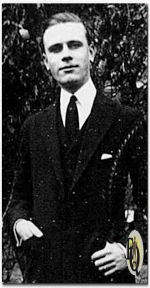 |
| Above right: Lawrence Darmour ca. 1915 | |
|
Lawrence Joseph Darmour was born in Flushing, Queens, NYC on January 8. 1895 as the son of James Frank Darmour and Julia Ducey. He lived at 187 Amity Street Flushing, Long Island. After graduating from Princeton University, he began his career in the motion picture industry as a film inspector for the Gaumont company. Within a year, he transitioned to working as a newsreel cameraman, contributing footage to both the Gaumont and Mutual weekly newsreels. He learned about the functionality of the motion picture camera and understood its importance and value. He built his own apparatus, one that was lighter and was more portable, to record events. In 1912, at age seventeen, he took his idea to Frank Reich, one of the production heads of the Franch Gaumont Film Company, which had started a division in New York City, and became their first American cameraman. In January 1915 Larry was assigned to cover the labor troubles at the fertilizer plant at Carteret, NJ. He had just set up his camera when the forty deputy sheriffs came rushing through the gates and opened fire on the 400 unarmed strikers. He finished his take and got safely out. Later that year William Randolph Hearst wanted to send 4 cinematographers to Europe, Joseph T. Rucker, Nelson Edwards and Berndt G. Phillips were on the Ford Peace Ship leaving for Europe. The Henry Ford Peace ship, the Prinz Oscar II sailed from Hoboken on December 4. 1915. The fourth cinematographer was Lawrence J. Darmour, a cameraman for Mutual. Pell Mitchell, head of newsreels for Mutual had gotten him aboard as what must have been a last minute addition. His passport was only issued on December 3. 1915, the day before sailing. He had photographed the Standard Oil strike with Edwards. Larry visited Holland, Sweden, Norway and Denmark. Darmour returned to the United States along with Berndt G. Phillips onboard the Kristianafjord on January 24. 1916, along with others of the Ford Peace Party. |
|
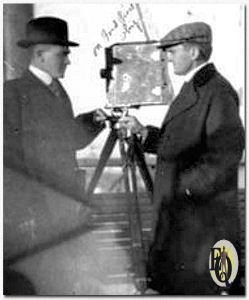 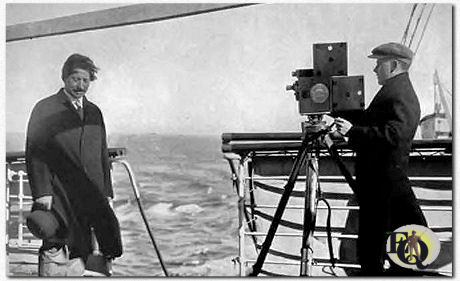 Above left: Edwards and Mutual cameraman Larry Darmour (L) aboard the Ford Peace ship, December 1915 Above right: Dr. Frederick Cook posing for Cameraman Lawrence Darmour----this is believed to be taken on the Ford Peace Trip to Norway late 1915 early 1916. |
|
|
During World War I,
he enlisted (1917) in the U.S. Army and served in the Signal Corps as a cameraman.
Gaining a reputation as a daredevil cameraman and captured great footage
during World War I. Above right: Signal Corps photo, 1st Lieutenant L.J. Darmour, USR., SC, Phot Branch, Training Section, Air Division |
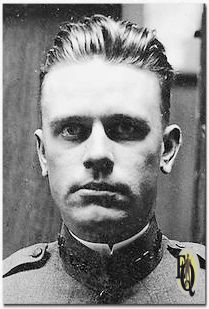 |
|
Notably, Darmour became the first American soldier on the battlefield at Chateau-Thierry after inadvertently wandering into the front lines the night before an Allied attack. He woke up amidst a barrage, the sole soldier on the field. Among other interesting feats at the front he made the first pictures of the emplacement of the "Big Bertha." one of the long range guns used in the bombardment of Paris. Just prior to his resignation he was assigned to the Peace Conference in Paris. |
|
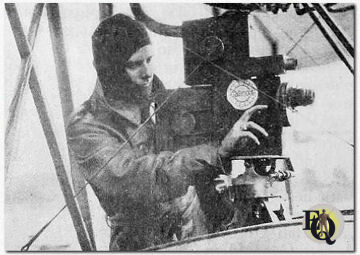 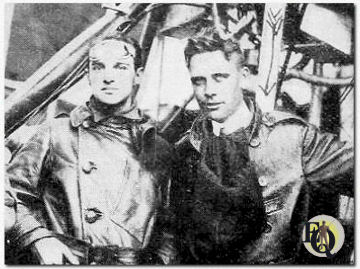 Above left: Larry Darmour, Gaumount Cameraman, assigned to the staff of General Pershing his duty was photographing the enemy positions from aeroplanes. Above right: Lieutenant Darmour (right), whose subjects have frequently been referred to in the cameramen department, as first Lieutenant in the Signal Corps. |
|
|
Following the war in 1919, Darmour resumed his work in newsreels. He took up his work again as assistant to Pell Mitchell, editor of the Gaumount Graphic and Gaumont News. He married Alice Whitaker Jones on July 2. 1921 in Manhattan, NYC. She was born in Los Angeles as the daughter of George A. Jones and Anna Johnston. She convinced him to move to LA. In August 1922 he joined Lewis J. Selznick's company as editor of its newsreel division. He was eventually promoted to vice president of Selznick's distribution arm (Photo right). |
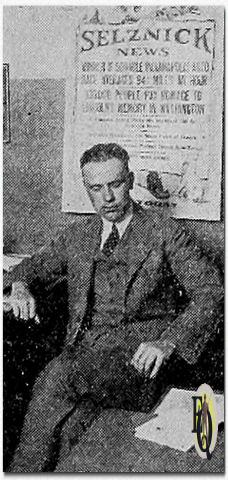 |
|
In 1925, he founded Standard Cinema Corporation, which became known for releasing short comedies produced by Joe Rock and starring Stan Laurel. A year later, Darmour - whom film critic and historian Leonard Maltin characterized as a “fast-buck” low-rent, low-budget, churn-out-as-muchas-you-can-in-the-shortest-amount-of-time studio head - established his own studio at 5823 Santa Monica Boulevard in Los Angeles. |
|
|
In September 1927, Darmour began producing the Mickey McGuire series of
short films, inspired by Fontaine Fox's comic strip and featuring a young
Mickey Rooney. The series, which consisted of approximately 60+ two-reel
comedies, ran from 1927 to 1934 and was distributed first through Joseph P.
Kennedy's FBO and later through RKO Radio Pictures, and Columbia. |
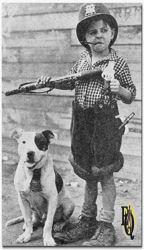 |
|
The series made Larry Darmour very wealthy and put his
studio on the map — albeit as a Poverty Row producer, but lucrative enough
to allow Darmour and his wife to build a beautiful beach house and an estate
in the Hollywood Hills. Building on the series' success, Darmour expanded into other comedy shorts, including the Barney Google and Toots and Casper series with Thelma Hill and Bud Duncan, as well as films starring Karl Dane & George K. Arthur, Alberta Vaughn, and Louise Fazenda. |
|

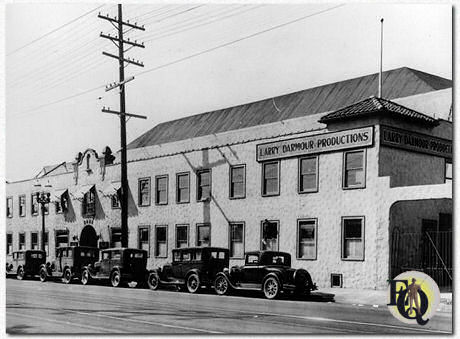 |
|
| On March 26. 1929 it was reported that Larry Darmour had taken over the entire Cal-Art plant at Santa Monica and Van Ness, and would be known thereafter as the Darmour Studios. The new studios were completely equipped with RCA Photophone and outfitted with every device necessary to the production of sound and dialogue pictures. Darmour had the jump on the other comedy producers by the way he was treating his pictures as far as detail and prober lighting, and above all, his comedies had always held a high standard for cleanliness. You never be offended when viewing a Darmour comedy. | |
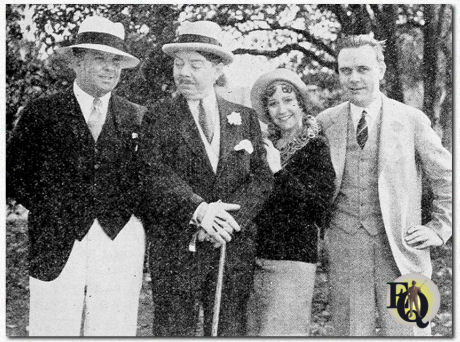 Above: The "Big Four" from the Record Breakers Series (From left to right): Al Heman, director, Al Cook, Alberta Vaughn and Larry Darmour, producer. Darmour Productions are turning out a series of two-reelers based on the stories of H.C. Witwer. They will be released by RKO (1929). |
|
|
In 1931, Darmour entered the feature-film market by founding Majestic Pictures, where he served as president. Majestic's first feature, Sea Devils (1931), starred Molly O'Day and marked the beginning of a slate of dramas and thrillers aimed at smaller neighborhood theaters. Darmour's productions were noted for their high production values, often featuring elaborate sets and well-known actors. Majestic's most famous film, The Vampire Bat (1933), starred Lionel Atwill, Fay Wray, Melvyn Douglas, Dwight Frye, and George E. Stone. In 1935, Majestic ceased operations when Herbert J. Yates consolidated several small studios into Republic Pictures. Darmour chose not to join Republic, instead arranging to release his films through Columbia Pictures. |
|
| Darmour produced numerous action and Western films for Columbia. In 1937, he oversaw Columbia's Jack Holt series and brought Ken Maynard on board for a series of Westerns. He also produced Columbia’s "Ranger" Westerns with Bob Allen and a companion series starring Bill Elliott. However, Darmour's name did not appear on these productions due to Columbia's policy of not crediting staff producers. |
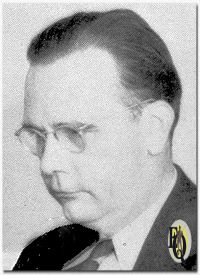 |
|
In 1940, Darmour was entrusted with Columbia’s serial productions. Already busy with feature films, he delegated the serial unit to veteran director James W. Horne, who infused the projects with a blend of action, adventure, and humor. Among these serials were The Green Archer, Terry and the Pirates, and Holt of the Secret Service—Jack Holt's final collaboration with Darmour. He now wanted to bring Ellery Queen to the screen in a new series for Columbia release and he wanted the cousins to work on the screenplays. The studio agreed with him that Ellery Queen would be a good substitute. The Gulf Oil Company sponsored the Ellery Queen radio programs and went along with the idea of the cousins doing their Ellery Queen broadcasts on the West Coast while working on scripts for Darmour.
In a deal worked out in May, Columbia would screen and
release the Ellery Queen mystery drama's to be produced by
Larry Darmour. Manfred B. Lee and Fred Dannay, co-authors, came to Hollywood
in July-August 1940 to write the first screen version script of the
detective stories. |
|
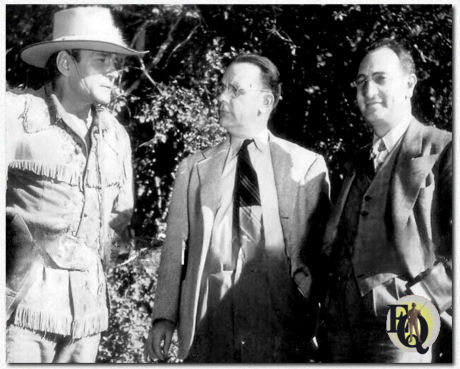 Above: (L-R) Lead actor Buck Jones, Columbia Pictures Producer Larry Darmour and General Sales Manager and later Executive Vice-President of Columbia Pictures Abe Montague during the filming of White Eagle (Columbia, Jan 31. 1941). |
|
|
In May 1941 Darmour signed a new deal with Dannay and Lee, assuring the producer of material for four more films in the series to be produced next season for Columbia. Darmour produced Columbia’s Ellery Queen detective-mystery films until 1942. However, his health declined after undergoing abdominal surgery in late 1941, and he passed away three months later, on March 18. 1942 in the California Luther Hospital. * In April the future of Darmour Studios' production contract with Columbia was discussed in New York between Mrs. Larry Darmour, now president of the company, and Columbia distribution executives. Two Ellery Queen films and a serial are due on this year's contract. Cliffhanger was Perils of the Royal Mounted (1942), to be followed by The Blue Beetle. The first of the Queen pictures would be The Greek Coffin Mystery. Second was tentatively title The Lady in Black. A possible continuation of the contract for next season was taken up. Ralph Cohn of Columbia supervised the Darmour company's film preparations, he took up the job of producer on Enemy Agents meet Ellery Queen (1942). Although Dannay in his last decade condemned the Gargan films as much as those with Bellamy, at the time he and Lee were quiet pleased with the series and even wanted the number of annual entries to be increased from three to four. Columbia balked at this demand and, following the two entries to be filmed in 1942, closed down production altogether, replacing the series with The Crime Doctor. (8) Margaret Lindsay and William Gargan did play a Queenesque role in No Place for a Lady (Columbia, Feb 1943) which was intended to be the first of a Jess Arno series, however it was unsuccessful and the series discontinued. What scribes often nicknamed “the Moneymoon” ended soon after World War II ended. It was difficult to market “B” features only a couple years afterward, a condition which was aggravated by the coming of television in the late 1940s with its plethora of programs, almost all of which were neither better nor worse than Hollywood “B” budget films. Following his death, Columbia staff producer Rudolph C. Flothow took over his production responsibilities. Darmour’s studio, informally known as the Larry Darmour Studio, continued operating under his name until its closure in 1949. Larry Darmour studios later became Keywest and then Family Films. Today Cinema Omega Props and an independent a storage facility sit on that property. Only a couple of the original buildings remain. Alice passed away on July 3. 1989 in Santa Clara, California. |
|
|
Notes: * Some sources mention heart attack as the cause of death Programs or dates in red still need confirmation. |
|
|
Click on Uncle Sam if you think you can help out...!
|
|
|
Other references
Additional video & audio
sources |
|
|
This profile is a part of
Ellery Queen a website on deduction.
The person above produced movies for an
Ellery Queen film series.
Click Uncle Sam if you think you can help
out...! Many of the profiles on this site have been compiled after very careful research of various sources. Please quote and cite ethically! |
|
|
Page first published December 26. 2024 Version 1.2 - Last updated April 28. 2025 |
|
 b
a c k
t o L i s t o f S u s p
e c t s
b
a c k
t o L i s t o f S u s p
e c t s
|
|
| Introduction | Floor Plan | Q.B.I. |
List of Suspects | Whodunit? | Q.E.D. | Kill as directed | New | Copyright Copyright © MCMXCIX-MMXXV Ellery Queen, a website on deduction. All rights reserved. |